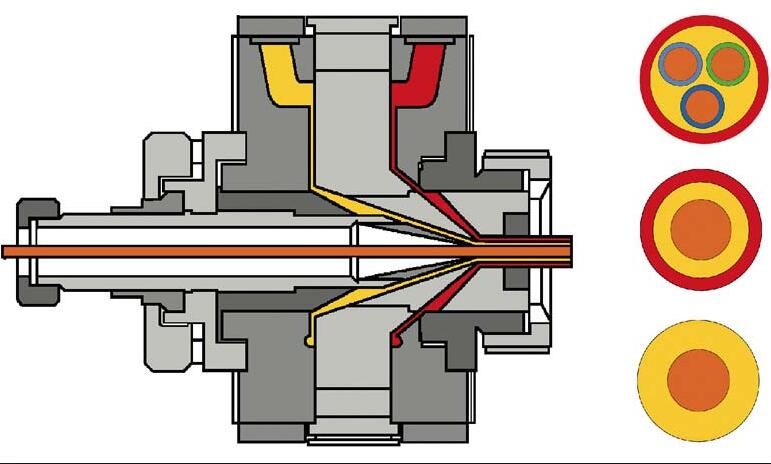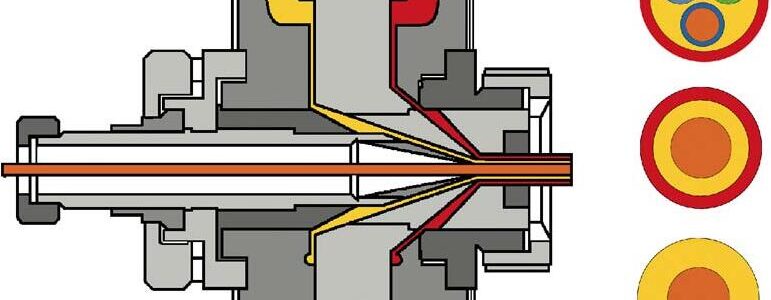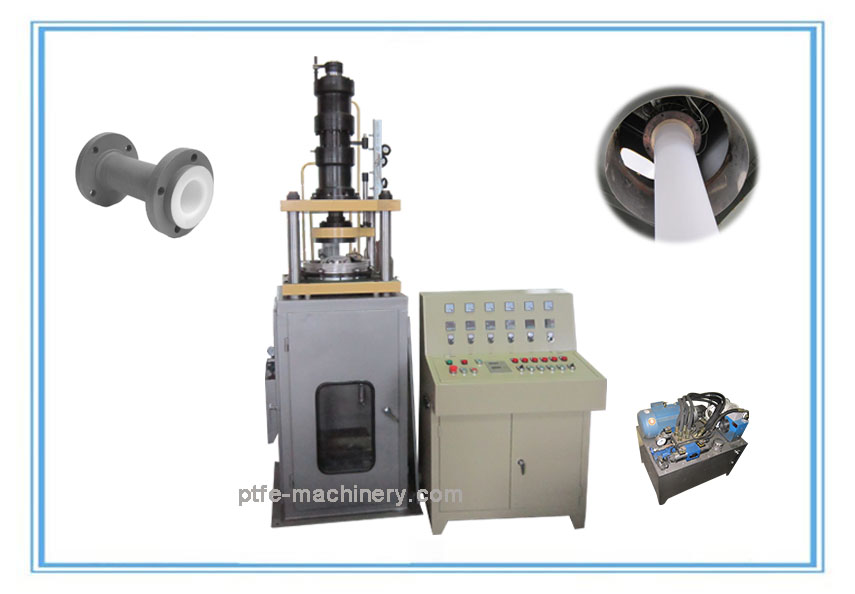Crosshead extrusion process is widely used to coat wires and cables with a polymer. The basic procedure includes pulling of the wire / cable to be coated at a uniform rate via a crosshead die, where it is covered with the molten plastic. This extrusion process for coating is used in most wires and cables that find usage in telecommunication and electrical applications along with electronic industry. For more coatings, two extruders can also be used in tandem.
Development Of Standard Two-Wire-Plus-Ground Cable By Crosshead Extrusion
Consider the example of the development of standard two-wire-plus-ground cable, which is commonly used in home wiring. In the beginning, white insulation is used to coat one copper wire and black insulation is used for the other. In a secondary process, following procedures are followed:
- A paper-wrapped copper wire is combined with the black & white insulated wires. This third wire is used for the ground.
- All the wires are fed through die
- In the die, final insulating jacket is applied for protecting all the wires together. The insulating jacket also assists in holding the three wires in a common plastic sleeve, which is used home wiring
Another approach to produce this product, is via the continuous process of production. In this, two extruders are used to individually apply white as well as back coating on the two conductive wires. The successive processes are as follows:
- These two products brought together by using a third copper ground wire
- The three wires are sent via a third crosshead die, where the addition of exterior jacket takes place
As all the three extruders are running at similar speeds, the end product is developed with minimal handling. A negative point of this process is the amount of production loss occurred, in case any of the three extruders is not running efficiently or there is some problem with only one of the extruders.
Wire coating is generally done by the use of single screw extruders, in which the crosshead extrusion process is carried out. The job of the extruder is to melt the resin & forward it to the die at an even & constant melt pressure and temperature. The crosshead extrusion process is carried out by using a general equipment in the line, which includes following basic pieces:
- Unwind station or some other wire / cable source for feeding the line
- Pretensioning station for setting the tension throughout the process
- Preheat station for preparing the wire for coating
- Crosshead die
- Cooling trough for solidifying the polymeric coating
- Test stations for assuring that the wire is suitably coated
- Puller for providing constant tension through out the process
- Winder for collecting the product
Typical Polymers Used In Wire Coating Applications
There are various polymers that are used in wire coating applications by the crosshead extrusion process. The characteristics of these polymers, which make them ideal for this purpose are their flexibility, electrical properties, ability to withstand abuse, and durability. Typical polymers are as follows:
- Polyethylene
- Polyvinylchloride
- Polyamide
- Polybutylene terephthalate
- Thermoplastic elastomers
- Ethylene propylene copolymers
- Polypropylene
- Fluoropolymers
In the wire coating operation, cross linked polyethylene is used. The wire is extrusion coated with this polymer in this process. At the end of coating operation, polyethylene is cross-linked on to the wire.





40 plus years of high-end aircraft cross-linked experience as supervisor of extrusion and radiation process, and Q.C. testing.
Mil spec, off-shore start up in China, England, Germany.
I enjoy looking through a post that will make men and
women think. Also, thank you for allowing for me to comment!
Nice answers in return of this difficulty with firm arguments and telling all
about that.